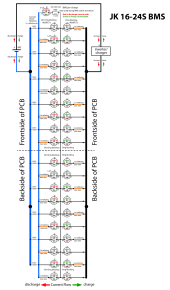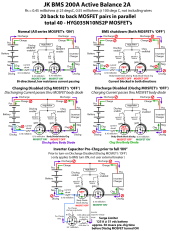Most of mosfet style BMS will need charging and discharging enabled....otherwise if you enabled only charging and not discharging there will be 0.4-0.6V voltage drop across BMS.
This the nature of mosfet and you need to know that. Otherwise you may find yourself raising voltage over and once mosfet is sensing this will automatically switch discharging and delta V across will drop down to 1-2 mV and then you will have higher voltage than necessary. Not all mosfet BMS are the same but JK are one that you should be informed about it. It is always best to do all benchtop experiments with new BMS so you are familiar how it operates otherwise it will drive you mad.
This the nature of mosfet and you need to know that. Otherwise you may find yourself raising voltage over and once mosfet is sensing this will automatically switch discharging and delta V across will drop down to 1-2 mV and then you will have higher voltage than necessary. Not all mosfet BMS are the same but JK are one that you should be informed about it. It is always best to do all benchtop experiments with new BMS so you are familiar how it operates otherwise it will drive you mad.





